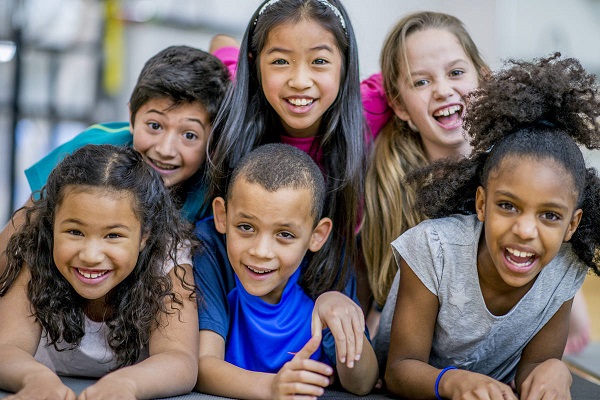This blog focuses on bringing students from various backgrounds together and encouraging collaborative learning, which helps teachers grow professionally. It is important to teach students culturally responsive instruction in elementary, middle, and high schools in our increasingly diverse society. Students from different cultures tend to cause conflicts and miscommunications in multicultural classrooms, which teachers must handle. Therefore, IGCSE schools in Chennai (https://www.internationalvillage.org/) teach students from different cultural backgrounds and incorporate multicultural education with effective teaching strategies. Learn more about the benefits and ways to implement multicultural education in schools here.
Ways To Implement Multicultural Education In Schools Suggested By Top IGCSE Schools In Chennai
Multicultural education is important because students are now exposed to an eclectic mix of cultural influences, and educators must ensure that all students have access to equal learning opportunities. Students benefit from multicultural education and a culturally responsive approach in the classroom. Teachers can learn how to create positive classroom environments and promote diversity in the classroom.
Teachers and administrators of top IGCSE schools in Chennai create cultural awareness in their students by fostering inclusion in the classroom community. To ensure that students feel included, you should be sensitive to their cultures, beliefs, and language concerns. Consider providing appropriate and relevant resources and constructing learning experiences that are more interactive and require collaboration.
- To promote cultural awareness in the classroom, teachers should know each student and their culture and establish trust and bond.
- Teachers should schedule one-on-one meetings with students to “check in” on them regularly. It will allow them to improve accessibility in the classroom for all students.
- Students should learn about their own ethnic and cultural backgrounds and give presentations about their family traditions and culture. Teachers should also encourage students to talk about their own ethnic and cultural backgrounds respectfully and maturely.
- You can identify the strengths and weaknesses of your students by checking their previous academic records, interviewing them, and evaluating their performance in the class.
- To promote multiculturalism in a classroom, students should read stories from different cultures and languages. They can also play board games. You can create quizzes and art projects to encourage students to participate.
- Please encourage students to share their real-life experiences with you and hold open forums to discuss current cultural or social issues.
- Ask the students to bring their cultural food to lunch and tell stories about their experiences.
- Organizing multicultural seminars and events, establishing a monthly celebration of culture, and participating in indigenous festivals will make students feel valued.
- Planning group activities encourage students to learn faster, become more involved, perform better, and share their heritage with others.
- Students can interview family members, write about family traditions, and form partnerships with other students to learn about their cultures.

Advantages Of Multicultural Education In Schools
When teaching multicultural education, make sure to celebrate all students’ differences and emphasize their significance in society. Students must examine their values, cultural beliefs, and biases to appreciate multicultural education fully.
- Multicultural education is beneficial to making students aware of historical events, religious beliefs, and the significance of various assemblies.
- Multicultural education encourages students to think broadly and critically and develop a more open point of view.
- Multicultural education exposes students to various beliefs and values that help them understand how people differ.
- Multicultural education helps students develop positive attitudes toward people from different cultures, races, and ethnic backgrounds.
- Multicultural education aims to instill principles of equity among all students, regardless of their differing cultures, ethnicities, races, beliefs, and backgrounds. It also aims to increase classroom participation and academic performance.
- A multicultural classroom welcomes all students and encourages them to work together to learn, regardless of social class, caste, gender, or creed.
- Multicultural education makes students feel welcomed and represented and promotes secularism and socialism.
- Multicultural education helps students learn about diverse cultural values through activities, lectures, discussions, and other means.
- Students’ commitments to social and civil actions are interconnected goals requiring care and sensitivity handling. Students need to learn how to interact with others who are different from them.
- Students’ expectations are shaped by their early life experiences and cultural values, and you can help them better understand themselves and other cultures.
- Students need opportunities for action to develop a sense of personal and civic efficacy.
- Every student needs to be exposed to a diverse range of cultures. It is possible to promote a child’s moral and cognitive development by interacting with the wider community.
- The classroom that teaches anti-bias shapes students’ social and civic skills, leading to civic engagement.
How Does A Classroom Get Better With Multicultural Education?
Allow students to exercise their freedom and flexibility. It will help them connect with the course material and prepare them for a diverse workforce. Diversity in the classroom helps students become better citizens, and this collection of culturally responsive teaching strategies can help. Students develop a greater sense of empathy by learning about different cultures, and they can avoid developing prejudices later in life. They better understand the subject matter when they collaborate and learn with people from different backgrounds. A student’ ability to be open-minded is enhanced by exposure to diverse opinions, thoughts, and cultural backgrounds. They have a greater sense of confidence and safety and are better prepared to work in a diverse environment.
Conclusion
Include diversity in your lesson plan as much as possible. Use real-life examples to help students connect personally and bring in speakers from different cultures to provide varying points of view and real-life context. Doing this will make students celebrate culture without any difference.






